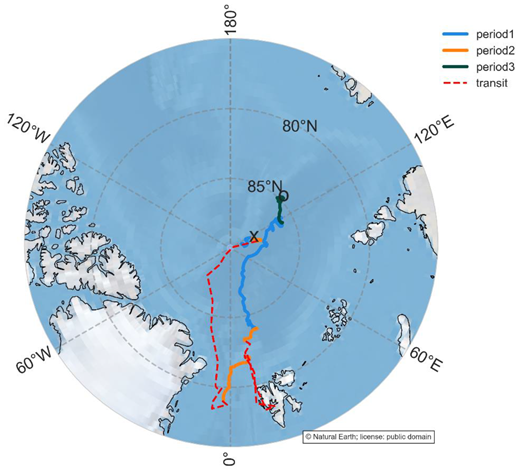2024-08-22 スイス連邦工科大学ローザンヌ校(EPFL)
<関連情報>
- https://actu.epfl.ch/news/from-clouds-to-fjords-the-arctic-bears-witness-to-/
- https://www.nature.com/articles/s41612-024-00712-3
- https://online.ucpress.edu/elementa/article/12/1/00125/200996/Characteristics-and-sources-of-fluorescent
汎北極圏メタンスルホン酸エアロゾル:発生源地域、大気の駆動力、将来予測 Pan-Arctic methanesulfonic acid aerosol: source regions, atmospheric drivers, and future projections
Jakob Boyd Pernov,Eliza Harris,Michele Volpi,Tamara Baumgartner,Benjamin Hohermuth,Stephan Henne,William H. Aeberhard,Silvia Becagli,Patricia K. Quinn,Rita Traversi,Lucia M. Upchurch & Julia Schmale
npj Climate and Atmospheric Science Published:13 July 2024
DOI:https://doi.org/10.1038/s41612-024-00712-3

Abstract
Natural aerosols are an important, yet understudied, part of the Arctic climate system. Natural marine biogenic aerosol components (e.g., methanesulfonic acid, MSA) are becoming increasingly important due to changing environmental conditions. In this study, we combine in situ aerosol observations with atmospheric transport modeling and meteorological reanalysis data in a data-driven framework with the aim to (1) identify the seasonal cycles and source regions of MSA, (2) elucidate the relationships between MSA and atmospheric variables, and (3) project the response of MSA based on trends extrapolated from reanalysis variables and determine which variables are contributing to these projected changes. We have identified the main source areas of MSA to be the Atlantic and Pacific sectors of the Arctic. Using gradient-boosted trees, we were able to explain 84% of the variance and find that the most important variables for MSA are indirectly related to either the gas- or aqueous-phase oxidation of dimethyl sulfide (DMS): shortwave and longwave downwelling radiation, temperature, and low cloud cover. We project MSA to undergo a seasonal shift, with non-monotonic decreases in April/May and increases in June-September, over the next 50 years. Different variables in different months are driving these changes, highlighting the complexity of influences on this natural aerosol component. Although the response of MSA due to changing oceanic variables (sea surface temperature, DMS emissions, and sea ice) and precipitation remains to be seen, here we are able to show that MSA will likely undergo a seasonal shift solely due to changes in atmospheric variables.
中央北極海における蛍光性エアロゾルの特徴と発生源 Characteristics and sources of fluorescent aerosols in the central Arctic Ocean
Ivo Beck,Alireza Moallemi,Benjamin Heutte,Jakob Boyd Pernov,Nora Bergner,Margarida Rolo,Lauriane L. J. Quéléver,Tiia Laurila,Matthew Boyer,Tuija Jokinen,Hélène Angot,Clara J. M. Hoppe,Oliver Müller,Jessie Creamean,Markus M. Frey,Gabriel Freitas,Julika Zinke,Matt Salter,Paul Zieger,Jessica A. Mirrielees,Hailey E. Kempf,Andrew P. Ault,Kerri A. Pratt,Martin Gysel-Beer,Silvia Henning,Christian Tatzelt,Julia Schmale
Elementa Published:May 30 2024
DOI:https://doi.org/10.1525/elementa.2023.00125

The Arctic is sensitive to cloud radiative forcing. Due to the limited number of aerosols present throughout much of the year, cloud formation is susceptible to the presence of cloud condensation nuclei and ice nucleating particles (INPs). Primary biological aerosol particles (PBAP) contribute to INPs and can impact cloud phase, lifetime, and radiative properties. We present yearlong observations of hyperfluorescent aerosols (HFA), tracers for PBAP, conducted with a Wideband Integrated Bioaerosol Sensor, New Electronics Option during the Multidisciplinary drifting Observatory for the Study of Arctic Climate (MOSAiC) expedition (October 2019–September 2020) in the central Arctic. We investigate the influence of potential anthropogenic and natural sources on the characteristics of the HFA and relate our measurements to INP observations during MOSAiC. Anthropogenic sources influenced HFA during the Arctic haze period. But surprisingly, we also found sporadic “bursts” of HFA with the characteristics of PBAP during this time, albeit with unclear origin. The characteristics of HFA between May and August 2020 and in October 2019 indicate a strong contribution of PBAP to HFA. Notably from May to August, PBAP coincided with the presence of INPs nucleating at elevated temperatures, that is, >−9°C, suggesting that HFA contributed to the “warm INP” concentration. The air mass residence time and area between May and August and in October were dominated by the open ocean and sea ice, pointing toward PBAP sources from within the Arctic Ocean. As the central Arctic changes drastically due to climate warming with expected implications on aerosol–cloud interactions, we recommend targeted observations of PBAP that reveal their nature (e.g., bacteria, diatoms, fungal spores) in the atmosphere and in relevant surface sources, such as the sea ice, snow on sea ice, melt ponds, leads, and open water, to gain further insights into the relevant source processes and how they might change in the future.



